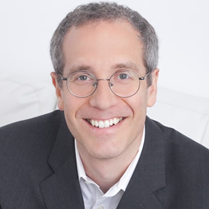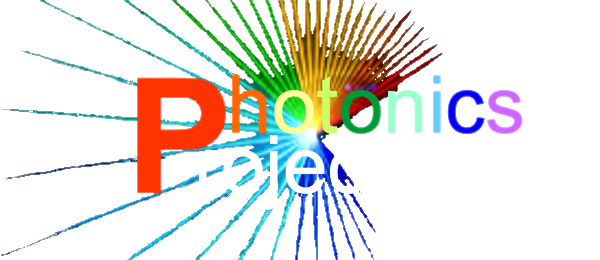Photonics Project Interview with DRS Senior Engineering Director for Sensors and Technology – Dr. Tony Ragucci

Dr. Tony Ragucci serves as Senior Director of Engineering for Sensors and Technology at Leonardo DRS Electro-Optical & Infrared Systems (EOIS). DRS EOIS has been an infrared research and development leader for over 50 years and produces sensors and systems for dismounted, ground vehicle, maritime, airborne, and strategic space applications.
Tony received his B.S. in Physics, Mathematics and Philosophy from Rose-Hulman Institute of Technology in 1996, M.S. in Physics from The Pennsylvania State University in 1999, and Ph.D. in Physics from The Ohio State University in 2004. Dr. Ragucci researches EO/IR sensors and systems for measurement and detection, with emphasis on augmented and low-level artificial perception.
Photonics Project: Tony, glad you could make it – seems like you’ve been keeping very busy with your new role.
Tony: Yes, a lot has happened since leaving RVS and coming to DRS initially as Engineering Director, and now recently having been appointed Senior Engineering Director for Sensors. This new role includes technical strategy for both our Cooled and Uncooled products.
Photonics Project: Can you tell us a little more about your role, and the direction you see for DRS and EOIS in particular going forwards?
Tony: Recent advances in booth cooled and uncooled sensors enable capabilities that might have seemed far-fetched even a few years ago. We’re in the middle of a paradigm shift from improving sensors for human users to low-level perception systems. My role is to focus our research and development to meet the needs coming in the next 2 to 5 years.
Photonics Project: Can you explain what you mean by “perception systems”?
Tony: Artificial intelligence and machine learning techniques are typically applied after sensing data has been acquired and relayed to a central processor. That approach limits efficiency and responsiveness. Low-level processing at the sensor can segment and prioritize data as it comes in to overcome those limitations. The ability to do that at the sensor is rudimentary perception, analogous to the processes in our own eyes.
Photonics Project: Great stuff, I am sure things keep interesting.
Did you take a look at the website, and what are some first impressions?
Tony: Sure, I thought it was a fantastic tool for people to learn EO Analysis.
Photonics Project: Great to hear that, thanks. What were some highlights on the site for you?
Tony: I like the modern learning approach, using an open domain toolset accessible to anyone, with interactive functions using sliders. That’s key for today’s students and helps build intuition. The nice graphics and tutorial material incorporated into the overall picture help too.
Photonics Project: What items need more work?
Tony: I noted in the first blackbody function that you have a negative in front of the temperature. Why is that?
Photonics Project: It was more of an artistic decision, that way the blackbody peak moves left when you move the slider left.
Tony: Have you gotten any other feedback on that?
Photonics Project: Yup…
Tony: And so it was, let’s say, mixed?
Photonics Project: No, not at all. It was completely uniform actually.
Tony: So, then they didn’t like it?
Photonics Project: They hate it. Every single person has commented negatively (on the negative).
Tony: (laughing) Well then, you should listen to your users…
Photonics Project: I know, especially when you are speaking about an absolute Temperature in Kelvin and trying to teach people about physics.
[Editors Note: The offending negative has now been removed!!]
Anything else you would note?
Tony: The speed is sometimes slow, although on this Zoom call your response looks really fast. Also, our worksite VPN can block the calculators.
Photonics Project: We have been working both of those issues. Try the site right now and see if the speed is better.
Tony: (trying the site in real time) Yes, actually that is much better.
Photonics Project: We have gotten some better server resources online and streamlined it a bit, so now it’s pretty much real time for VPN or non-VPN use. Also, there is a GitHub for the modules that anyone can download for local execution. I think for people who will use them longer term, that will be the way to go.
Tony: My last comment is just to include as much tutorial material as possible along with the calculation functions.
Photonics Project: OK thanks we will work that as well. The Infrared and EO Systems textbook has all the background so people can always get that for a deep dive as well, but we will continue to do what we can.
Anyway, back to some business questions, What are some critical needs for new hires, skills wise? Are you guys seeing a gap in available skilled people?
Tony: I’m not sure I would say a gap, but demand is increasing for both technical breadth and depth in science and engineering. Technical depth is always valuable and the flexibility to pull knowledge from other domains enhances those abilities and can provide new insights.
Photonics Project: What would you see as a future vision for the 3rd Edition Textbook and working interactively with the website?
Tony: I think it would be great for students to read through a section of the book, then play with the tools on the website directly related to that material. That seems like a great way to get a feel for the mathematical relationships. New tools could be added over time as well, even after publication of the book.
Photonics Project: Yes, we are already receiving some notebooks from a number of Academic, Government, and Industry sources. With the open source nature of Python, and the internet generally, it will be simple for people to contribute and further extend the functionality of the site and associated GitHub.
Per that topic, where do you see things going from here? Both for the website and yourself, and/or otherwise…
Tony: It would be great to see the website take off as a tool not just for students but also for professionals to use across the EO/IR industry for quick design calculations. As the toolset grows, it could become a way to quickly compare design approaches, for instance.
As for me, I’ve always been interested in understanding perception and extending the underlying concepts. This is an era of unprecedented change for humanity, and I consider us fortunate to contribute. I’ll continue pushing the envelope with practical technological advances in perception technology.
Photonics Project: thanks a lot Tony for your time and helpful comments!
